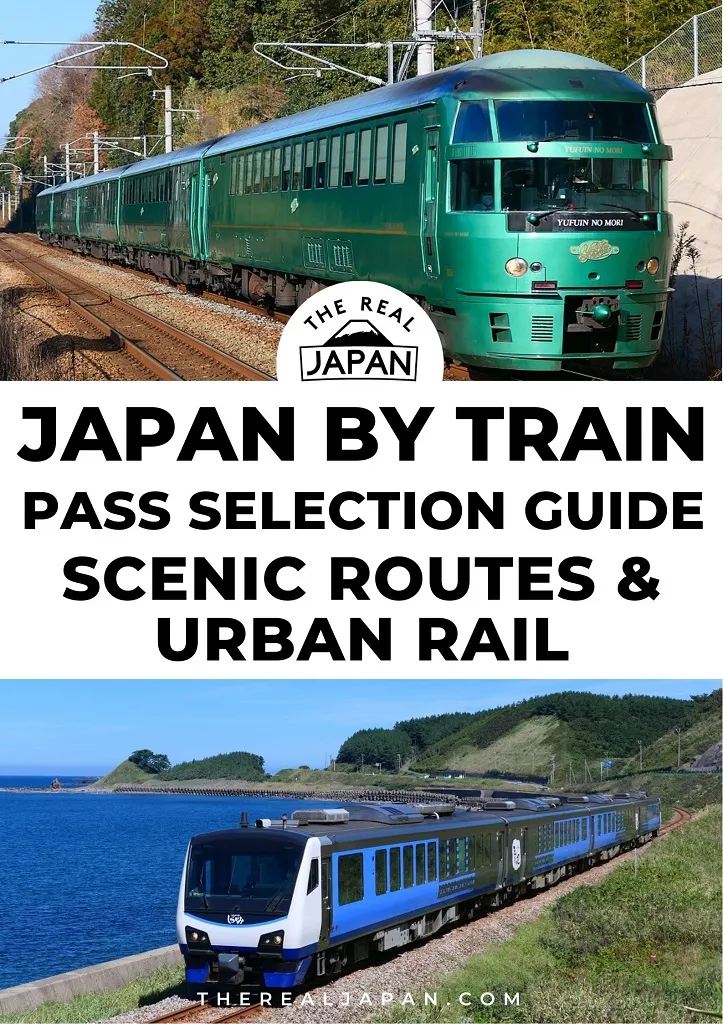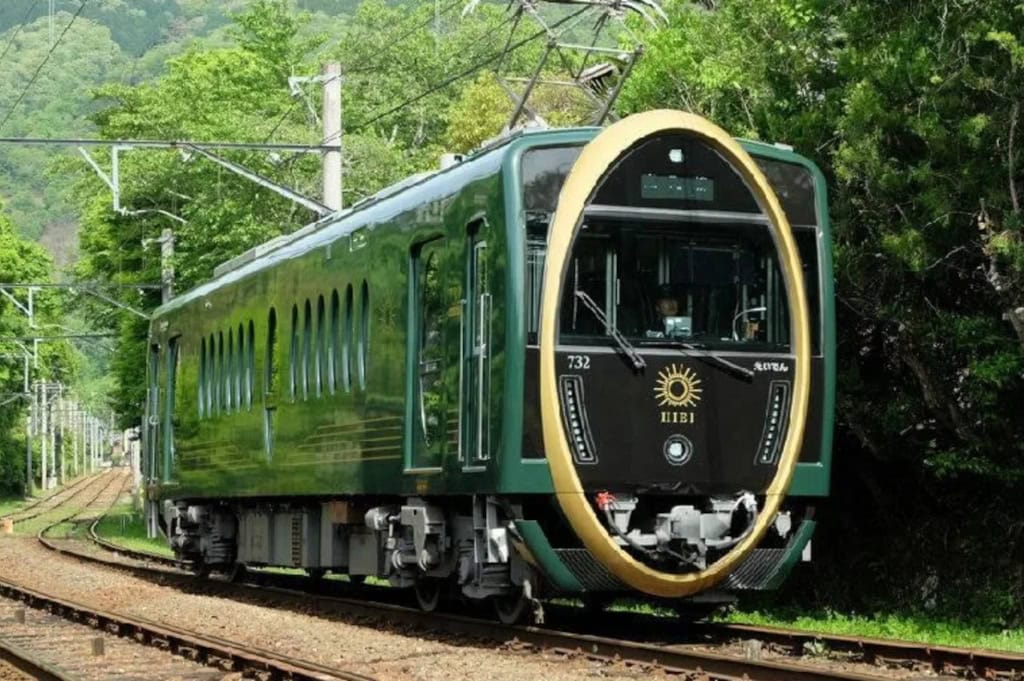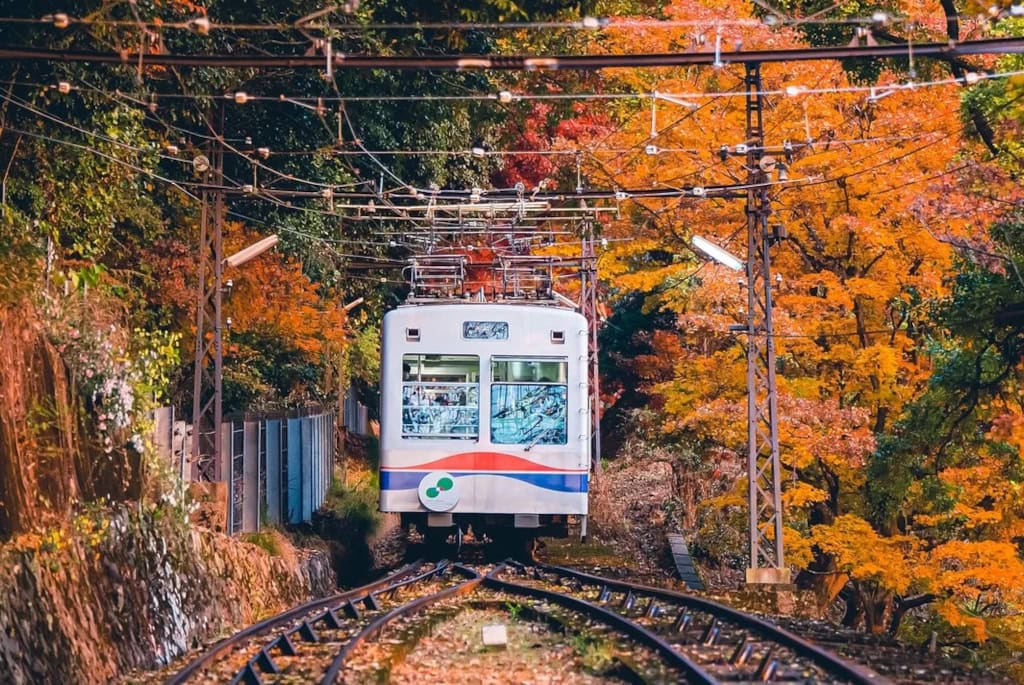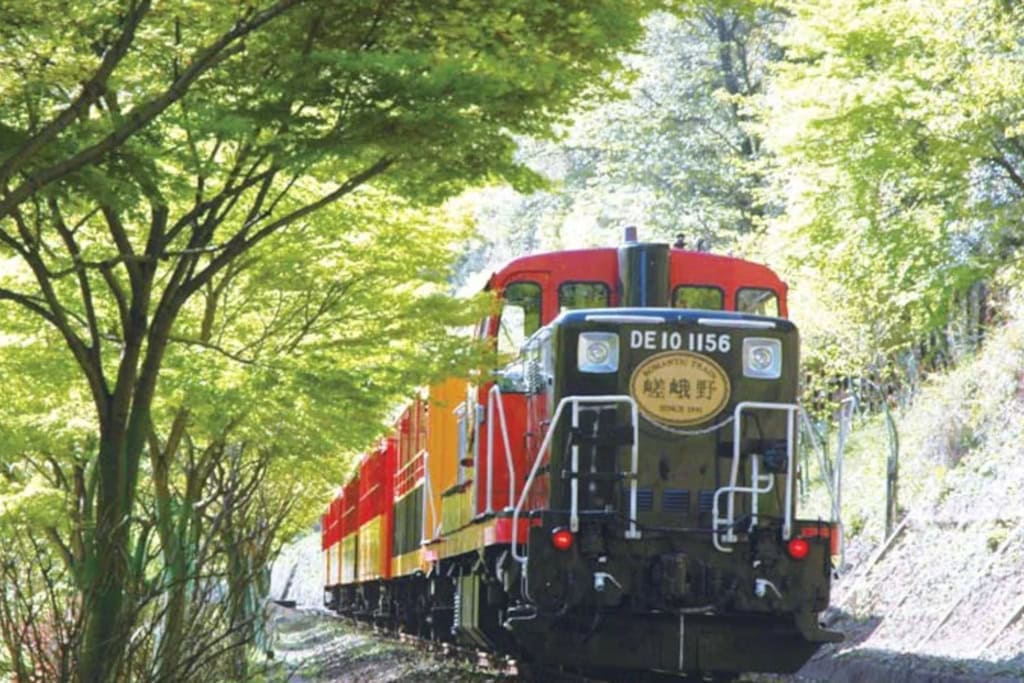Japan by Train – Welcome onboard this special guide to selecting the best rail passes in Japan. Whether you’re dreaming of gliding past Mount Fuji on the shinkansen or discovering charming tram systems in historic cities, our route today covers all the essentials you need to know about Japan’s incredible rail network.
Summary
From gliding past Mount Fuji on the shinkansen to discovering charming tram systems in historic cities, this essential guide covers everything you need to know about how trains in Japan aren’t just transportation – they’re gateways to authentic experiences and breathtaking scenery.
Key Takeaways
- The famous Japan Rail Pass requires careful consideration since its 2023 price increase of up to 70%. You now need a packed itinerary to make it pay for itself, as a Tokyo-Kyoto return shinkansen trip is just over half the cost of the 7-day pass.
- Smart explorers are increasingly using Japan’s excellent Regional Rail Passes, which offer better value for focused trips. Options like the Tokyo Wide Pass (¥15,000 for 3 days) and the Kansai Wide Area Pass (¥12,000 for 5 days) provide great coverage for specific areas.
- Trains are more than just transportation in Japan; they’re gateways to authentic experiences. You can find around 60 dedicated tourist trains, such as Kyushu’s “36 plus 3” and the Hello Kitty Shinkansen, which turn travel into entertainment.
- Beyond the bullet train, Japan has a hidden network of scenic routes. You can travel along dramatic river valleys and spectacular coastlines on lines like the Gono Line, which hugs the Japan Sea coast, and the Tadami Line in Fukushima.
- Urban rail systems offer their own unique adventures, from the charming, vintage trams in Nagasaki that feel like time travel to Osaka’s futuristic monorail.
- Some train stations are architectural masterpieces worth visiting in their own right, like the impressive 15-story Kyoto Station and the massive Osaka Station City complex.
Want more free content like this?
- Summary
- Key Takeaways
- The JR Pass Decision: National vs Regional Passes
- But here's the catch with the Japan Rail Pass
- A sample itinerary that would pay for the 7 Day JR Pass
- The Regional Rail Pass revolution
- Beyond the bullet train: Scenic routes and touring trains
- Scenic rail trips from Kyoto
- Urban rail adventures: trams, monorails, and dramatic stations
- VIDEO: Exploring Osaka Station City's Plazas
- Steam dreams and railway museums
- Selected train travel resources
- Help building your Japan itinerary
- Leave A Comment / Ask A Question
- About the Author
- RESOURCES
Japan by Train: Pass Selection Guide Plus Scenic Routes & Urban Rail Adventures
by Rob Dyer
The JR Pass Decision: National vs Regional Passes
From the famous Japan Rail Pass to hidden regional alternatives, from steam locomotive adventures to futuristic monorails, we’ll explore how trains aren’t just transportation in Japan – they’re gateways to authentic experiences and breathtaking scenery.
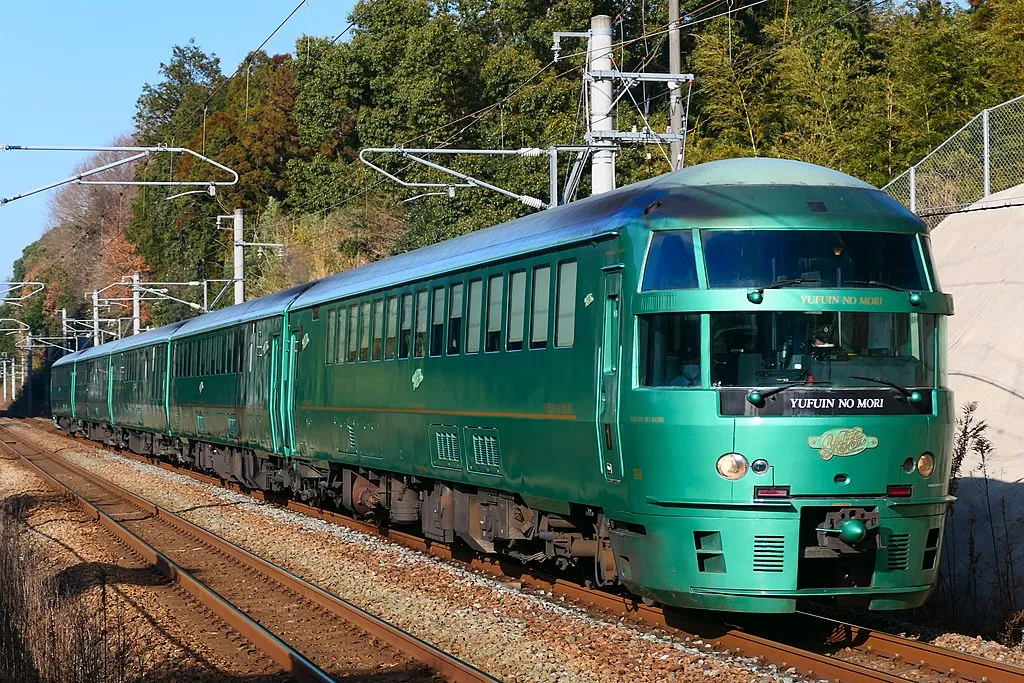
One of the first questions every visitor to Japan faces is: should you buy the famous Japan Rail Pass? The answer is not as simple as you might think, especially after the 2023 price increases that saw costs rise as much as 70% (ouch!).
The pass covers unlimited travel on most JR lines, including shinkansen services (except the fastest Nozomi and Mizuho trains), local trains, JR buses, and even the JR ferry from Hiroshima to Miyajima. You can make free seat reservations, and Green Car (first class) passes offer larger seats and premium amenities.
The Japan Rail Pass comes in 3 durations: 7, 14 and 21 days. The 7 day pass costs ¥50,000 (around $340). The 14 day ¥80,000 (around $543), and the 21 day ¥100,000 (around $680).
Currency Converter
But here’s the catch with the Japan Rail Pass
However, all three versions of the Rail Pass work for consecutive days of travel. Meaning even if you buy the shortest 7 Day Pass and you’re staying in one city for several days, you’re paying for unused travel time, and it is unlikely to be worth buying.
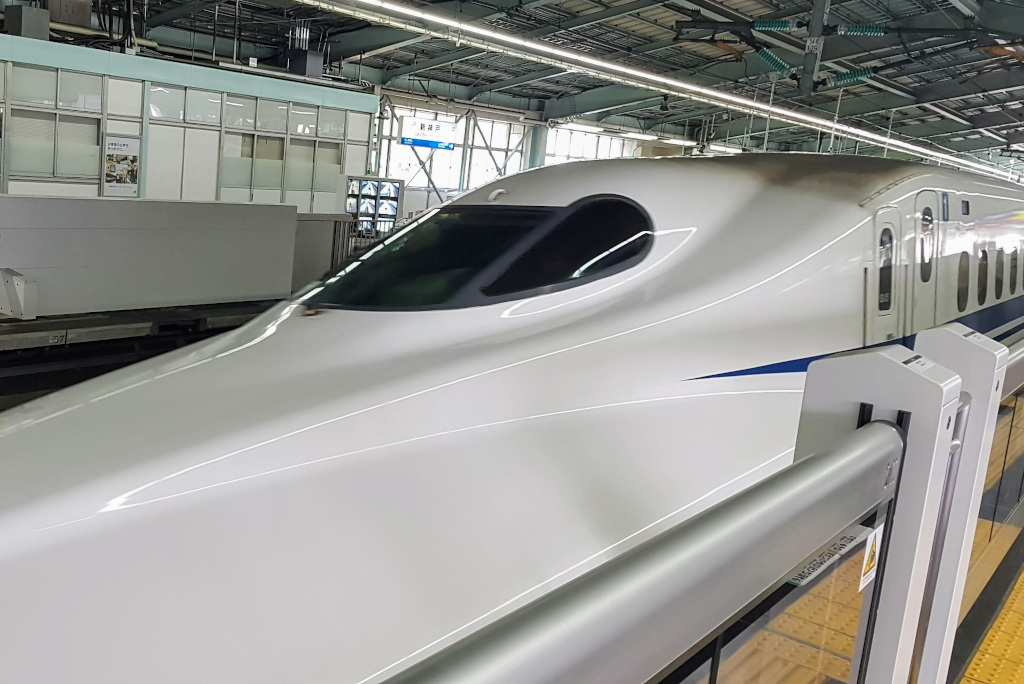
A return trip on the shinkansen between Tokyo and Kyoto is ¥26,000 (around $177). That’s only just over half the cost of the shortest 7 day pass. So you’d need to pack a lot more into your week to make the pass pay for itself. Not impossible, but it takes a bit of work to come up with a sensible itinerary.
A sample itinerary that would pay for the 7 Day JR Pass
Here’s a sample itinerary that would pay for the 7 Day Pass (costing ¥50,000):
Tokyo > Hakone: ¥4,000
Hakone > Kyoto: ¥14,000
Kyoto > Hiroshima: ¥11,000
Hiroshima > Osaka: ¥10,000
Osaka > Tokyo: ¥14,000
Total Cost: ¥53,000 (savings ¥3,000)
Currency Converter
The Regional Rail Pass revolution
Since the price hikes in the nationwide JR Pass, smart explorers have increasingly turned their attention to Japan’s excellent array of Regional Japan Rail Passes.
Regional passes often provide better value for focused exploration. These lesser-known passes cover specific regions at lower prices and sometimes include private railways that the national pass doesn’t cover.
Here’s three of the best value options (all prices are for adults and when passes are purchase online in advance outside of Japan):
Tokyo Wide Pass (¥15,000 for 3 days) unlocks not just Greater Tokyo but also Mount Fuji access via Kawaguchi-ko, Nikko’s UNESCO sites, and the hot spring resort of Yuzawa – perfect for day trips from Tokyo.
Kansai Wide Area Pass (¥12,000 for 5 days) stretches from Kyoto to the famous Tottori Sand Dunes, allowing exploration of western Kansai plus parts of the Chugoku region that many tourists never see.

Alpine-Takayama-Matsumoto Pass (¥24,000 for 5 days) includes the spectacular Tateyama-Kurobe Alpine Route through the Japan Alps – a journey using cable cars, ropeways, and mountain buses that rivals anything in Switzerland.
Pro Strategy: Combine multiple regional passes for longer trips, or use a short national pass for initial long-distance travel, then switch to regional passes for focused exploration. (An IC travelcard such as the Suica card can be used to fill in most gaps in between such as subways, buses and taxis.)
Master the JR Pass decision with the complete guide →
Discover the 5 best value regional passes →
Beyond the bullet train: Scenic routes and touring trains
While shinkansen speed is impressive, Japan’s most memorable train journeys happen on the slower, more scenic routes that wind through mountains, along coastlines, and through rural valleys.
Japan’s hidden scenic network
The rail network extends far beyond the famous bullet trains. With 27,400km of tracks covering all main islands, you can travel coast-to-coast through mountain ranges, along dramatic river valleys, and around much of Japan’s spectacular coastline.
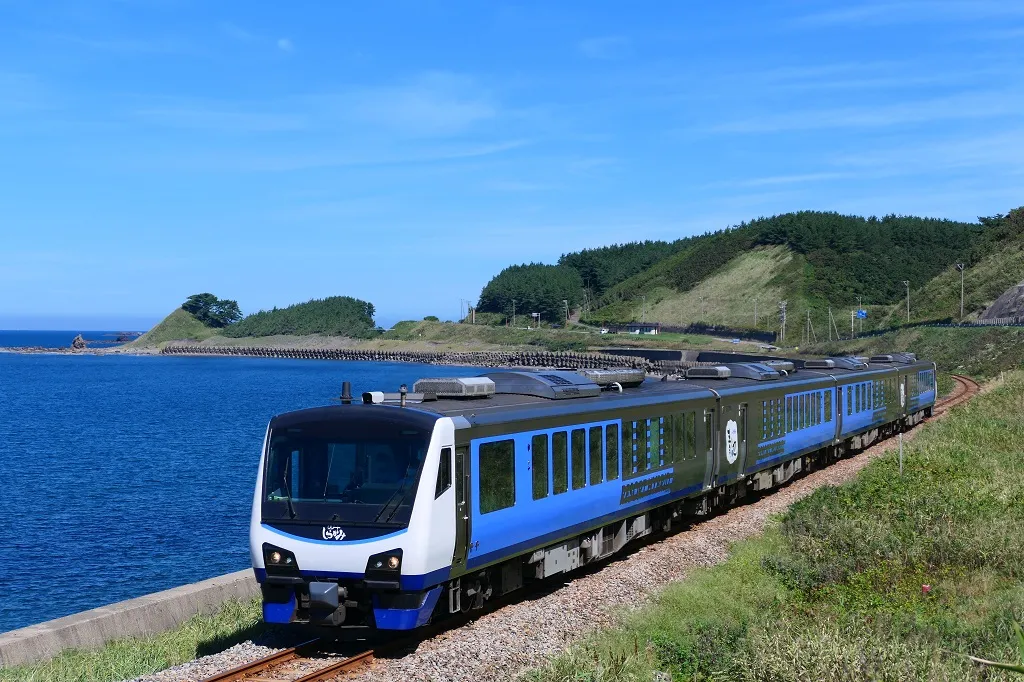
The Gono Line hugs the Japan Sea coast through Aomori and Akita prefectures, offering views of rugged coastline and traditional fishing villages. Take the sightseeing Resort Shirakami train with its large windows for expansive views alongside The Sea of Japan. The Tadami Line follows the pristine Tadami River through Fukushima’s deep valleys, while Shikoku’s Yodo Line connects Ehime and Kochi prefectures through mountain scenery that changes dramatically with the seasons.
Touring trains that transform travel into experience
Japan operates around 60 dedicated tourist trains that turn transportation into entertainment. These aren’t just scenic routes – they’re rolling cultural experiences.
Kyushu’s “36 plus 3” circles the entire island as an all-round sightseeing train, while the Yufuin no Mori connects Fukuoka to the hot spring resort of Yufuin through countryside that looks like a living postcard. Meanwhile, the strikingly pink Hello Kitty Shinkansen proves that even bullet trains can embrace Japan’s kawaii culture.
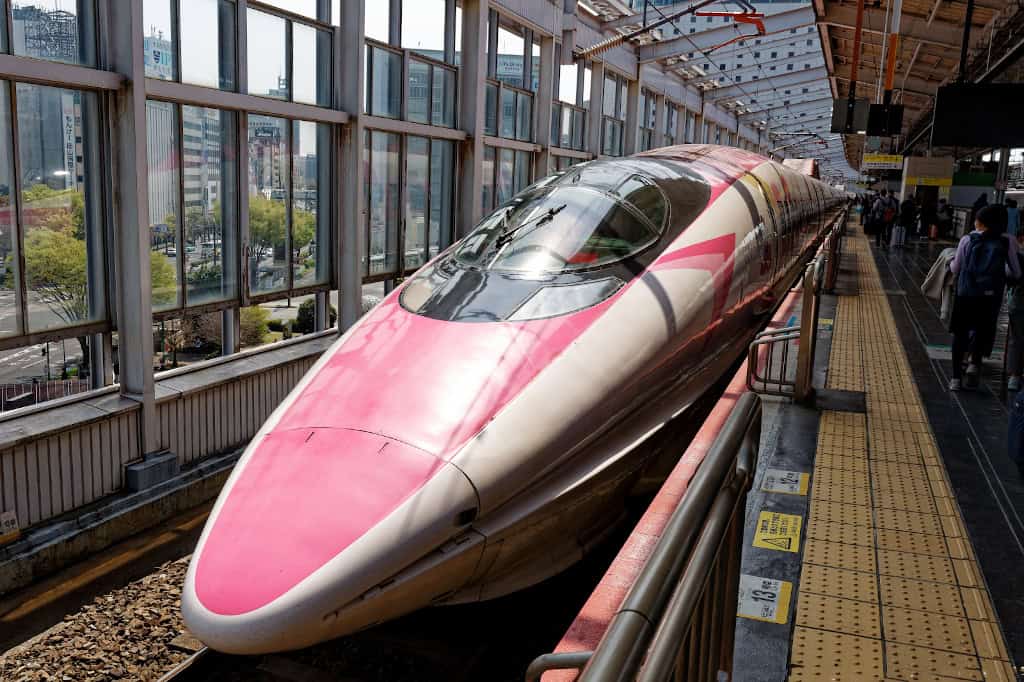
Many tourist trains slow down or make extended stops at scenic viewpoints, allowing you to photograph landscapes and sometimes even enjoy cultural performances onboard. Some feature restaurant cars showcasing local cuisine, while others offer themed experiences related to anime, local history, or seasonal celebrations.
Another such train also in Kyushu, and one my wife and I both really enjoyed taking, is the Ibusuki no Tamatebako (literally meaning “Ibusuki’s Treasure Box”) is a special limited express train service run by JR Kyushu. The train travels between Kagoshima-Chūō Station and Ibusuki Station along the scenic Ibusuki Makurazaki Line.
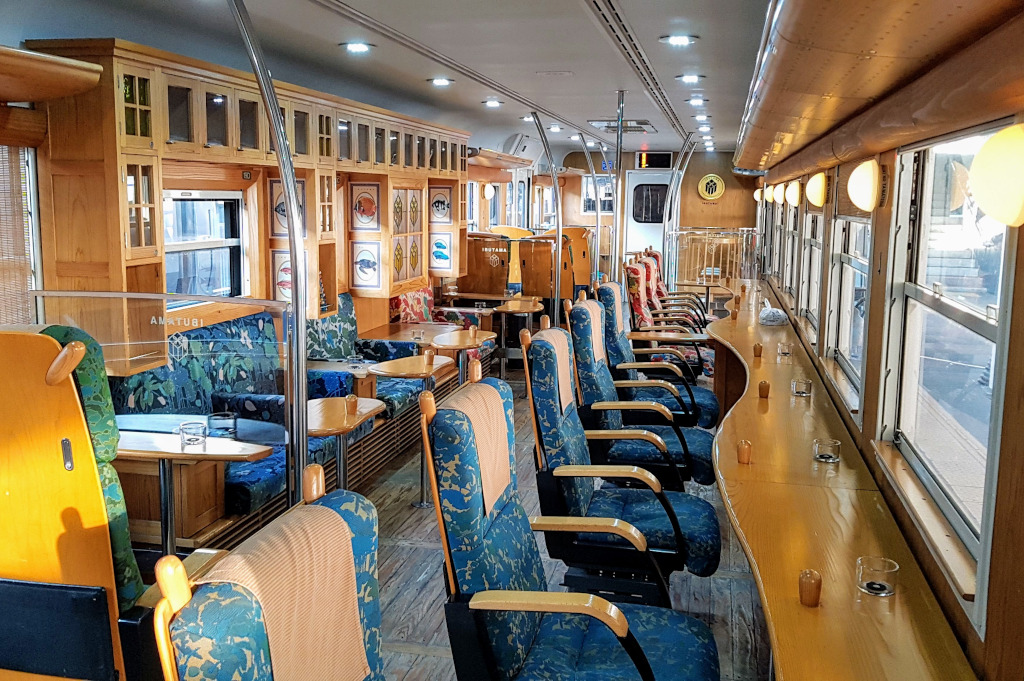
This unique train draws its inspiration from the legendary Dragon Palace tale of the Satsuma Peninsula. The design features a striking black and white exterior paired with luxurious sofa seating inside. What makes this train truly magical is the dramatic white smoke that billows when passengers board – a theatrical touch that recreates the mystical treasure box from the beloved Urashima Taro folk tale.
Beyond the obvious routes
Skip the crowded Tokyo-Kyoto corridor and discover routes like the journey from Tokyo to Takayama. While it takes 5-6 hours via Nagoya, the section from Nagoya follows the spectacular Hida River valley through Gifu Prefecture – some of Japan’s most beautiful mountain scenery.
The Limited Express Yakumo between Okayama and Matsue crosses the mountains separating Japan’s “sunny side” (Sanyo) from the “shadow side” (Sanin), revealing a completely different Japan that most international visitors never see.
Explore Japan’s scenic rail network in detail →
Scenic rail trips from Kyoto
The rural areas surrounding Kyoto offer some of Japan’s most enchanting train journeys that showcase the ancient capital’s stunning natural landscapes and cultural treasures, from the mountain-climbing Eizan Electric Railway that provides access to sacred temples and spectacular seasonal foliage, to the nostalgic Sagano Romantic Train that winds through the picturesque Hozu River gorge in Arashiyama.
This 1-day pass ticket “Ee Kippu” is perfect for passengers who want to fully enjoy many popular tourists attractions along Eizan Railway. This ticket enables you to get on and get off at any station as many as you likes on the day.
848 meters higher than Eizan, the route of the cable car is divided into two parts. When reaching the top of the mountain, you can also take the shuttle bus to visit the world heritage, Enryakuji Temple.
Each of these memorable rail experiences (and others), including unlimited day passes and special combination tickets, are available for instant purchase through Klook, so you can easily plan some scenic adventures and immerse yourself in the local natural beauty when visiting Kyoto.
Urban rail adventures: trams, monorails, and dramatic stations
Japan’s urban rail systems offer their own unique adventures, from historic tram networks that survived modernisation to futuristic monorails and train stations that qualify as architectural masterpieces.
Nagasaki’s time-machine streetcar trams
The Nagasaki Electric Tramway, operating since 1915, offers perhaps Japan’s most charming urban rail experience. For just ¥120 per ride (or ¥500 for an unlimited day pass), these vintage trams connect virtually every major sight in the city.
The colour-coded routes make navigation simple, and riding these retro streetcar trams through Nagasaki’s historic districts feels like time travel. The trams pass atomic bomb memorials, traditional Chinese temples, the famous Spectacles Bridge, and Glover Garden – all while providing an authentic local experience that few tourists discover.
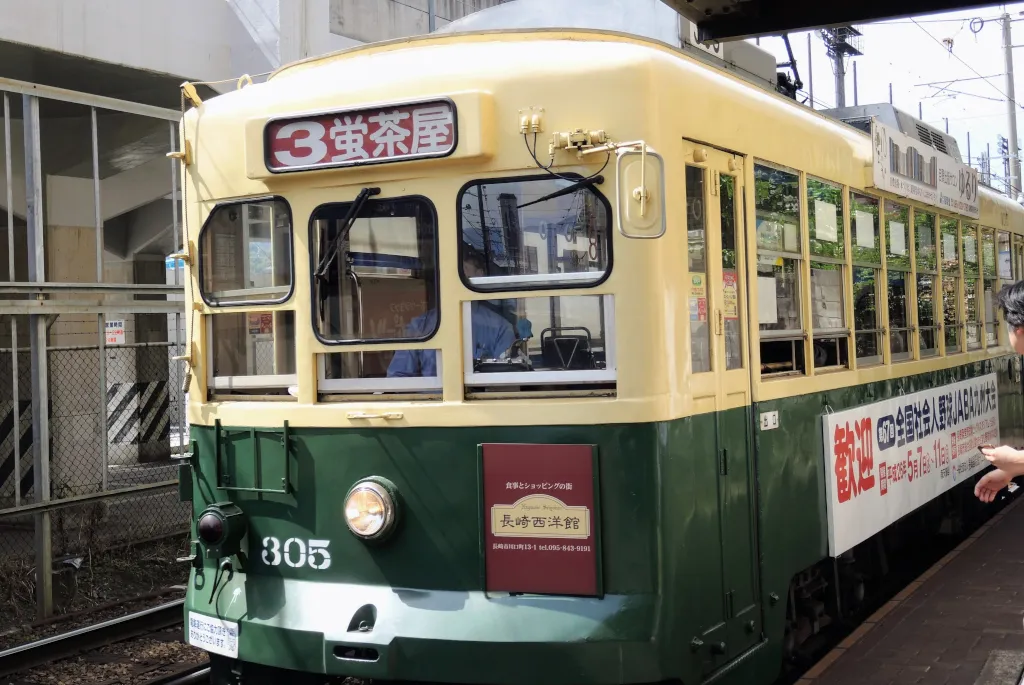
Osaka’s futuristic monorail
At the other end of the spectrum, the Osaka Monorail represents Japan’s vision of transportation’s future. Running over 21km from Osaka International Airport to Kadoma City, it offers elevated views of the urban landscape while connecting travelers to the Hanshin region’s transport network.
The monorail cars often feature special livery designs, like the distinctive Chicken Ramen decorations that celebrate Japan’s instant noodle culture – proving that even utilitarian transport can embrace local character.
Kyoto Station – architecture as destination
Some train stations deserve visits in their own right. Kyoto Station, designed by Hiroshi Hara and opened in 1997, rises 15 stories and ranks among Japan’s most impressive architectural achievements.
The building incorporates shopping malls, hotels, restaurants, a theatre, department store, and government facilities within a dramatic glass and steel structure. A 12-minute escalator journey to the roof reveals the station’s full scale and offers panoramic views over historic Kyoto – a perfect contrast between ultra-modern architecture and traditional cityscape.
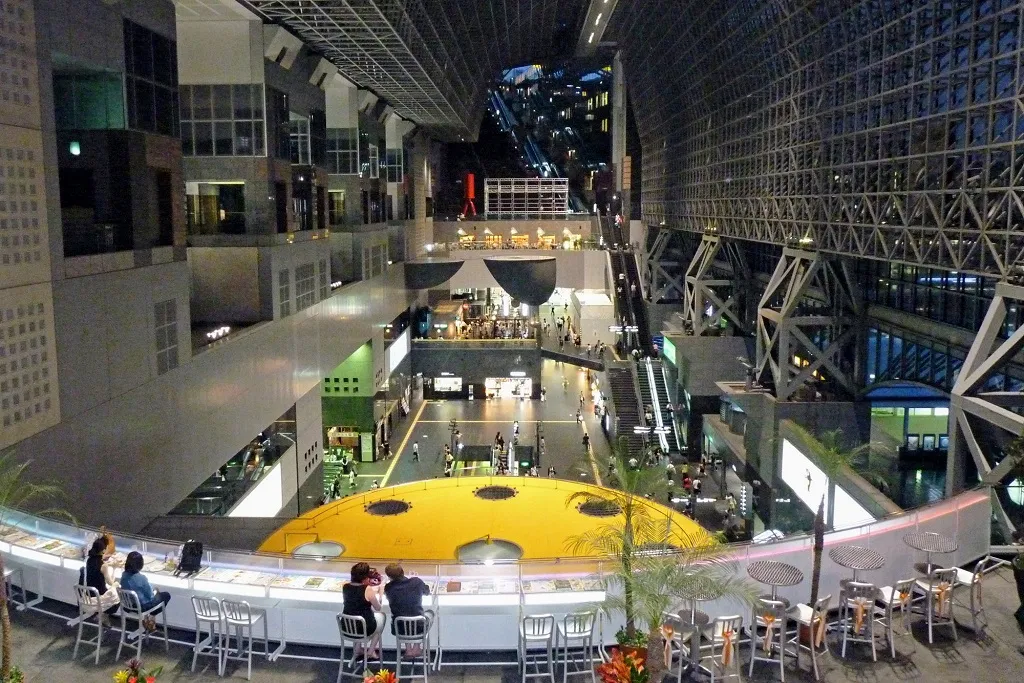
The station alone justifies extending a Kyoto visit, especially for architecture enthusiasts or anyone interested in how Japan blends functionality with dramatic design.
Osaka Station City – a vast transportation and shopping complex
Osaka Station City stands as a massive shopping and transit hub, anchored by the impressive North Gate and South Gate Buildings that frame the central Osaka Station.
This enormous complex truly lives up to its “City” designation, seamlessly linking multiple rail and subway networks with a bus terminal while incorporating Umeda Station into its sprawling layout.
Fair warning: you will get lost here! The design – especially across the ground level and two underground floors—has earned a reputation for being genuinely bewildering. I speak from experience on this one. I’ve been navigating this place since 2000, and I still find myself wandering in circles practically every visit!
VIDEO: Exploring Osaka Station City’s Plazas
Both the North and South buildings house an impressive array of amenities: department stores, hotels, restaurants, a multiplex cinema, sports facilities, medical clinics, and much more. Take the elevator up to the 12th floor for spectacular views, including a perfect vantage point of the iconic Umeda Sky Building.
Overhead, the station’s striking steel and glass canopy creates a dramatic slanted ceiling that seems to float above the entire complex. From the upper levels, you can take in sweeping views of the intricate web of railway tracks and the eleven platforms below.
Master Nagasaki’s tram system (a step-by-step guide) →
Explore Kyoto Station’s dramatic architecture →
Exploring Osaka Station City (prepare to be amazed) →
Steam dreams and railway museums
For the ultimate classic train experience, nothing beats the romance of steam locomotives and the comprehensive story told by Japan’s railway museums.
Kyoto Railway Museum’s living history
The Kyoto Railway Museum offers more than static displays – it provides hands-on experiences with Japan’s rail heritage. The museum’s crown jewel is the steam locomotive ride, where visitors can experience authentic steam-powered travel on a 1km round trip through the facility.
The 10-minute journey exits the railyard on a private track that runs parallel with the modern Tokaido shinkansen line to Kyoto Station – creating the perfect contrast between railway past and present. The steam locomotive then veers off to run alongside Umekoji Park before reversing back to the museum platform.
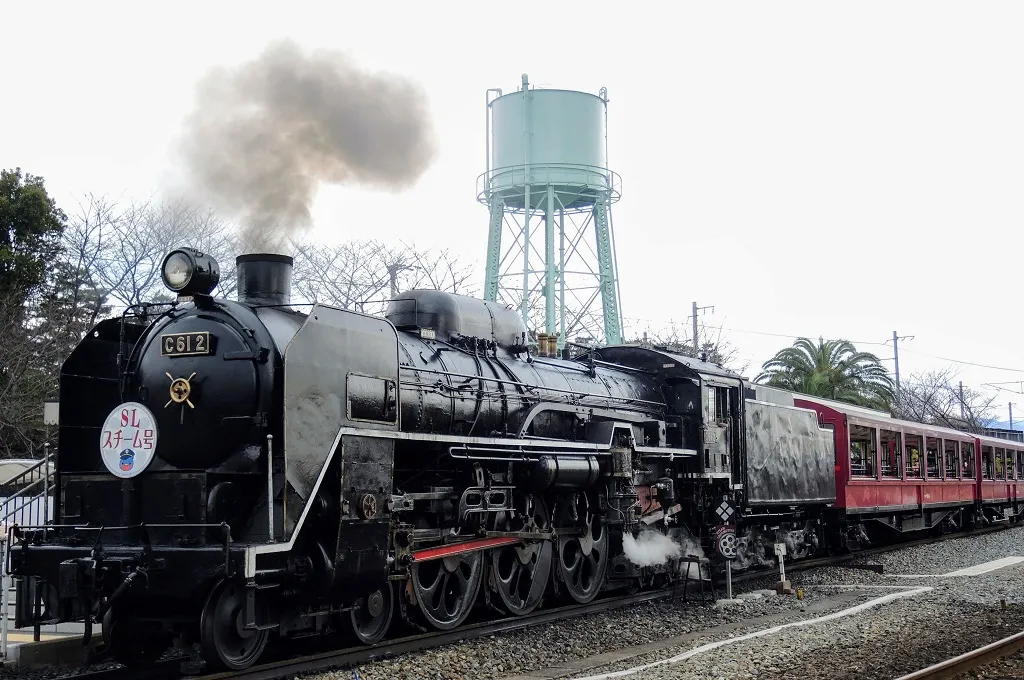
For a small additional fee beyond the museum entrance, this experience provides a genuine taste of how Japan’s rail network began, while the museum’s extensive collection tells the complete story of Japanese railway development from steam age to today’s technological marvels.
Steam routes throughout Japan
Beyond museums, several active steam locomotive routes operate throughout Japan, offering scenic journeys pulled by carefully maintained historic engines. These special services typically run on weekends and holidays, creating authentic period experiences through Japan’s most beautiful landscapes.
The routes combine nostalgia with scenery, allowing passengers to experience how train travel felt in earlier eras while passing through regions chosen specifically for their photogenic qualities.
Experience the Kyoto Railway Museum’s steam locomotive ride →
Selected train travel resources
Essential Rail Travel Guides:
- Japan Rail Pass: The Ultimate Guide
- Regional Japan Rail Passes: 5 Best Value Options
- Exploring Japan by Train: A Beginner’s Guide
- Steam Locomotive and Railway Museum Experiences
Urban Rail Systems:
- Nagasaki Electric Tramway Guide
- Riding The Osaka Monorail
- Kyoto Station Architecture Tour
- Exploring Osaka Station City
Rail Travel Podcast Episodes
That’s it for this train travel guide – we’ve reached our destination! Let me know if you found this helpful.
Happy travels (and happy train spotting)!
Help building your Japan itinerary
If you want help building your own, unique Japan itinerary, perhaps including a number of different rail routes along the way, then my Concierge service is what you need.
Here’s a few ways in which I can help you build your dream trip:
- A tailor-made Japan Travel Itinerary matching your interests and preferences
- A unique Artisan Experiences Plan giving you private access to Japan’s finest craftspeople
- Curated accommodation recommendations based on your criteria
- Recommendations for transportation, airport transfers, rail travel and passes, private flights
It’s my premium service, tailored to your preferences and requirements. From getting your questions answered to receiving a complete, bookable itinerary. Simply choose the number of consultation days to match your needs.
“Saved me more than the cost of the service. Excellent stuff!” – Andrew Rondeau, UK
About the Author

A writer and publisher from England, Rob has been exploring Japan’s islands since 2000. He specialises in travelling off the beaten track, whether on remote atolls or in the hidden streets of major cities. He’s the founder of the multi-award-winning TheRealJapan.com.
Recommended For You
RESOURCES
Further Related Guides
- Exploring Osaka Station City
- Japan Rail Pass: The Ultimate Guide
- Kyoto Station Architecture Tour
- Regional Japan Rail Passes: 5 Best Value Options
- Exploring Japan by Train: A Beginner’s Guide
- Nagasaki Electric Tramway Guide
- Riding The Osaka Monorail
- Steam Locomotive and Railway Museum Experiences
More Planning Resources
My List of Recommended Japan Travel Resources
Recommended Japan Travel Resources
My Japan Travel Store
Feel free to share this guide if you found it helpful:
